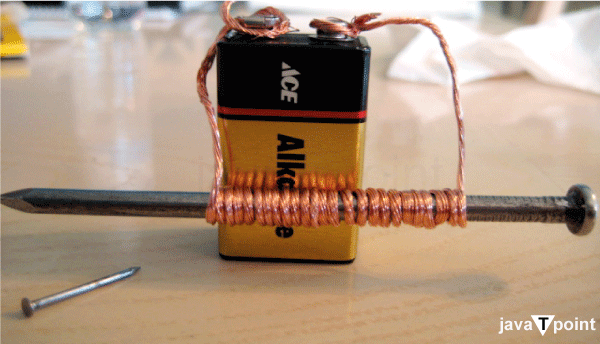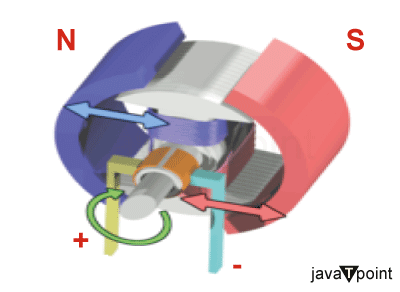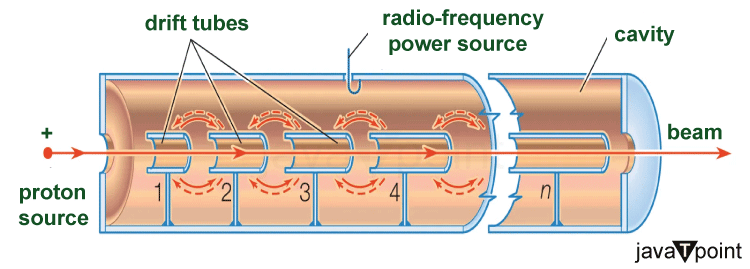Uses of ElectromagnetWhat is an Electromagnet and Its Basic Construction?It is a well-known fact that when an electric current passes through a conductor, there is a generation of a magnetic field. The generated magnetic field is in a direction perpendicular to the direction of the flow of current. This generation of magnetic field due to the flow of current is known as electromagnetism. Electromagnets are based on the phenomenon of electromagnetism. To make an electromagnet, a coil of wire is taken. This wire is coiled around a metal, usually iron. When current is passed through the wire, a magnetic field is produced. The produced magnetic field induces magnetism in the piece of metal around which the wire is wound. The magnet formed by induced magnetism is known as an electromagnet. Electromagnets are not permanent magnets; however, unlike permanent magnets, the magnetic power of electromagnets can be controlled by adjusting the amount of current flowing through the coil of wire. 
Electromagnets are stronger than permanent magnets. The magnetic power of electromagnets depends on a variety of factors, such as the number of coils in the wire or the material used. It is generally observed that increasing the flow of current and the number of loops results in increased magnetic power. The control and manipulation of magnetic power that electromagnets provide give them an advantage over permanent magnets and make them highly versatile and valuable in various applications. History of Electromagnets:In 1820, while conducting a lecture demonstration, Danish scientist Hans Christian Oersted observed that a flowing current through a wire caused the needle of a nearby kept compass to deflect. This accidental discovery showcased that there is a generation of magnetic field due to the flow of electric current. Building upon Oersted's work, the French physicist Andre-Marie Ampere conducted extensive experiments on the interaction between electric currents and magnetic fields. He formulated Ampere's Law, which describes the magnetic field produced by a current-carrying conductor. His contributions were essential in laying the theoretical groundwork for understanding electromagnetism. In 1825, British inventor William Sturgeon invented the first practical electromagnet. He wound several turns of insulated wire around an iron core and passed a current through it. This resulted in a much stronger magnetic field than that produced by a simple wire. Sturgeon's electromagnet could lift significantly more weight than a conventional magnet and became a foundation for future developments in the field. Joseph Henry, an American scientist, made significant contributions to electromagnets in the early 1830s. He improved upon Sturgeon's design by using multiple layers of wire around an iron core, increasing the magnetic strength further. Henry's electromagnets were capable of lifting heavier weights and had greater practical applications. Importance of Electromagnets:Electromagnets are preferred over permanent magnets for practical usage in many applications due to several key advantages they offer. While both types of magnets have their unique strengths and weaknesses, electromagnets excel in various scenarios where flexibility, control, and adaptability are crucial. Some key elements that give electromagnets supremacy over permanent magnets are:
Uses of Electromagnets:As mentioned before, there are a variety of practical fields and devices where electromagnets are used. Some of them include: 1. Electric Motors:Electromagnets function on the rotatory magnetic field produced by the electromagnets. In electric motors, electromagnets are kept within the magnetic field of permanent magnets. The generated magnetic field interacts with permanent magnets, causing a rotatory force to act. The rotating coil is attached to a shaft. The shaft is the part of the motor which provides the desired rotatory motion. Electric motors are used in heavy industrial machinery and household appliances such as fans, grinders, juicers, toys, etc. 
2. In Cranes for Lifting:Electromagnets are used in cranes to help lift and move heavy magnetic parts. They are usually seen in junk yards. The cranes use electromagnets to move objects made of magnetic materials, such as car parts. They are also used to separate out metallic objects from non-metallic objects. They are extensively used in recycling plants, mining operations, and processing of bulk materials. Electromagnetic separators attract and extract ferrous materials, such as iron and steel, from a mixture of materials, enhancing recycling efficiency and material purity. 
3. In the Medical Field:The functioning of Magnetic Resonance Imaging (MRI) is based on electromagnetism. MRI machines utilize strong electromagnets to generate a uniform magnetic field. This magnetic field aligns the protons in the body's tissues. By applying radio waves and varying the electromagnetic field, the protons resonate and emit signals that are detected and processed to create detailed images of the body's internal structures. MRI is a non-invasive medical imaging technique widely used to diagnose and monitor various conditions. 4. Particle Accelerators:Electromagnets play a crucial role in particle accelerators, such as those used in scientific research and in the field of nuclear physics. Particle accelerators, such as cyclotrons and synchrotrons, use powerful electromagnets to control and steer charged particles along their paths. Electromagnets are used to create magnetic fields that guide the particles, allowing scientists to study particle physics and conduct experiments in fields like high-energy physics and nuclear research. 
5. Household Appliances:A large number of household appliances have electromagnets in them. Appliances that have electric motors, such as fans, mixers, grinders, electric toothbrushes, trimmers, etc, all have electromagnets in them. Other than this, electromagnets are used in refrigerators and microwave ovens. Electric stoves or Induction stoves have electromagnets in them and use electromagnetic induction to transfer heat to utensils. 6. Transportation:Electromagnets are used in Magnet Levitation Train or Maglev trains. Maglev trains utilize electromagnets to achieve magnetic levitation and propel the train without physical contact with the tracks. Electromagnetic coils on the train interact with a series of magnets on the tracks, creating a repulsive force that lifts the train and reduces friction. This technology enables high-speed, efficient, and smooth transportation. 7. Mass Spectrometry:Mass spectrometry is an analytical technique used to determine the mass and chemical composition of molecules. It is widely used in many fields, including chemistry, biochemistry, pharmaceuticals, environmental analysis, and forensic science. In a mass spectrometer, ions are generated and separated based on their mass-to-charge ratios. Electromagnetic fields are employed to guide and manipulate the ions' paths, allowing for precise analysis and identification. 8. Electromagnetic Brakes:Electromagnetic brakes use the principle of electromagnetism to provide efficient and precise braking in various applications. When an electric current is applied to the brake's electromagnets, they generate a magnetic field that interacts with a conductive surface, inducing eddy currents. These eddy currents produce a braking force that opposes the motion, slowing down or stopping the object. 9. In Storage Devices:In physical storage devices, both old and new, electromagnetism is used to 'write' and store data. The data is stored in the form of bits or bytes with the help of electromagnetism. Hardware contains a magnetic tape that is used to store data. The write head uses an electric current to align magnetic domains on the storage medium, encoding the data. The read head detects the magnetic field variations and converts them back into electronic signals for data retrieval. 10. Audio Devices:In audio devices such as earphones, speakers, headphones, etc, Electromagnets are employed to convert electrical signals into sound. The electromagnets are used to contract and retract the magnetic diaphragm of the speaker to produce sounds. By changing the strength of the electromagnet, the quality and volume of the sound can be changed. Similarly, in a microphone, sound waves cause the diaphragm to vibrate, thereby varying the magnetic field in the vicinity of a coil of wire. This variation induces an electric current, which represents the sound signal that can be amplified and transmitted. 11. Communication:For long-distance communication and data transfer, electromagnetic waves are put to use. Antennas are essential components of communication systems that transmit and receive electromagnetic signals. Electromagnetic waves, such as radio waves, are generated by an electric current oscillating in an antenna. The design and configuration of the antenna, which often includes electromagnets, determine the characteristics of the emitted or received signals. Electromagnets are used to shape and direct the radiation pattern of the antenna, enabling efficient signal transmission and reception. In television broadcasts, microwaves are used. In mobile phones and transistors, electromagnets are used. The sound is transmitted to long distances by converting it to electromagnetic waves. Electromagnets are integral to wireless communication technologies such as Wi-Fi, Bluetooth, and NFC or Near Field Communication. In these systems, they are used to create and modulate radio waves that carry data between devices like smartphones, laptops, and other wireless-enabled devices. Conclusion:Electromagnets are indispensable and have shaped modern society like no other tool. The versatility of Electromagnets makes them a better choice than permanent magnets. Electromagnets, in today's society, are involved in some of the most crucial functions. These functions range from mechanical work, such as motors used in household appliances and industrial machines, to being used to produce electromagnetic radiation in antennas for long distance communication. They are used in both old and new storage devices, such as VLC. The power and duration of the magnetic field produced can be easily controlled with electromagnets by altering the supply of electric current, and this makes electromagnets extremely suitable for practical and commercial usage. Electromagnets and electromagnetism, in general, gave rise to more advanced concepts such as electromagnetic induction.
Next TopicUses of Microscope
|
 For Videos Join Our Youtube Channel: Join Now
For Videos Join Our Youtube Channel: Join Now
Feedback
- Send your Feedback to [email protected]
Help Others, Please Share









